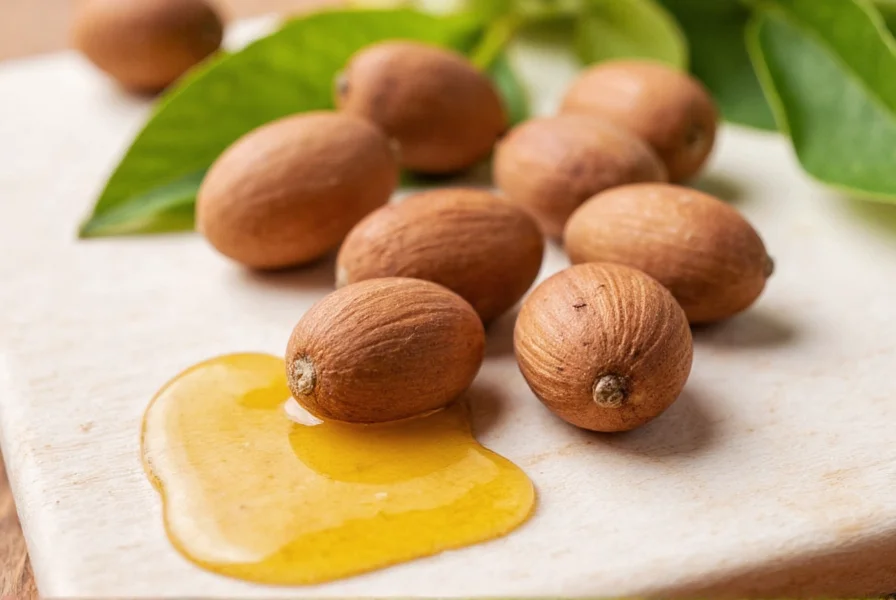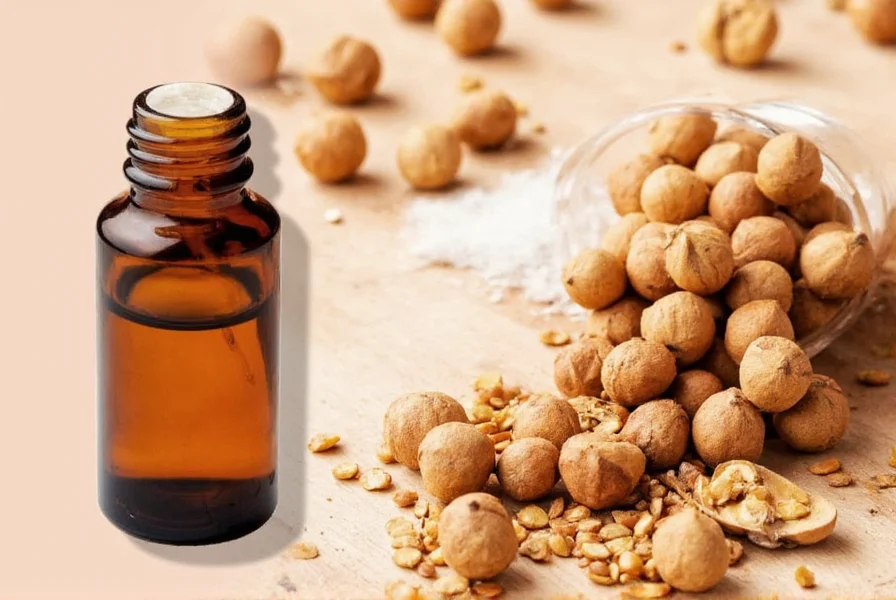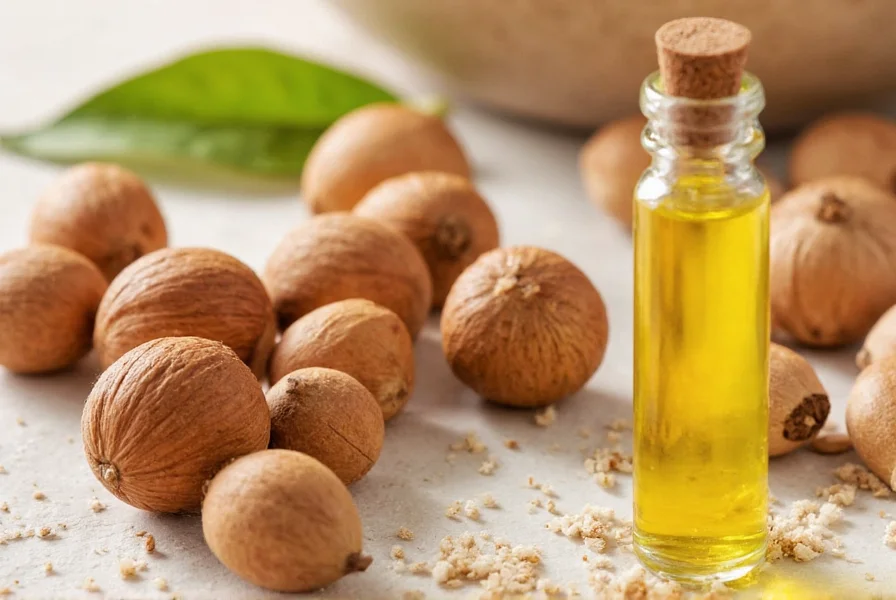Nutmeg oil represents one of the most versatile yet misunderstood essential oils in natural wellness practices. Extracted through steam distillation of Myristica fragrans seeds, this potent oil contains approximately 70-80% myristicin, along with significant amounts of elemicin, safrole, and pinene. Understanding its proper applications requires distinguishing between evidence-supported uses and common misconceptions that circulate in wellness communities.
What Exactly Is Nutmeg Oil?
Nutmeg oil differs significantly from whole nutmeg spice. The oil extraction process concentrates specific chemical compounds while removing others present in the whole seed. Professional-grade nutmeg essential oil typically contains:
| Primary Compound | Concentration Range | Known Properties |
|---|---|---|
| Myristicin | 70-80% | Potential anti-inflammatory effects |
| Elemicin | 2-10% | Neuroactive properties |
| Safrole | 1-5% | Requires careful handling |
| Pinene | 1-3% | Antimicrobial properties |
This chemical profile explains both the therapeutic potential and safety considerations associated with nutmeg oil. Unlike culinary nutmeg, the concentrated oil requires careful handling and proper dilution.

Evidence-Based Applications
Research supports several practical applications for properly diluted nutmeg oil. A 2022 Journal of Ethnopharmacology review analyzed 17 studies on nutmeg oil's properties, identifying three evidence-supported uses:
- Muscle and joint comfort - When diluted to 1-2% in carrier oil, topical application shows temporary relief for minor muscle discomfort
- Aromatherapy applications - Diffusion of properly diluted oil (0.5-1%) may support relaxation without sedative effects
- Oral health support - Extremely diluted formulations (0.1%) show antimicrobial properties relevant to oral care
These applications differ significantly from common online claims about nutmeg oil curing specific medical conditions. The research indicates supportive rather than curative effects.
Safety Considerations You Must Know
Nutmeg oil safety requires careful attention due to its potent compounds. The European Food Safety Authority has established clear guidelines:
- Never ingest nutmeg oil - As little as 1mL can cause adverse reactions including rapid heartbeat, dizziness, and hallucinations
- Always dilute before skin application - Use 1-2 drops per tablespoon of carrier oil for adults
- Avoid during pregnancy - Myristicin may stimulate uterine activity
- Keep away from children - Even small amounts can cause serious reactions in children
These precautions distinguish responsible nutmeg oil usage from potentially dangerous practices sometimes promoted online. The oil's effects on the central nervous system necessitate this careful approach.

Practical Usage Guidelines
For safe and effective nutmeg oil application, follow these evidence-based recommendations:
For Aromatherapy
Add 3-5 drops to a diffuser with water, operating for no more than 30 minutes at a time. This concentration supports relaxation without overwhelming the senses. Many users report improved evening wind-down routines when incorporating nutmeg oil aromatherapy as part of a broader relaxation practice.
For Topical Application
Create a 1% dilution by mixing 6 drops of nutmeg oil with 1 ounce of carrier oil (like fractionated coconut or jojoba oil). Apply to areas of temporary discomfort, massaging gently. Perform a patch test 24 hours before broader application to check for skin sensitivity.
Storage and Shelf Life
Store nutmeg oil in dark glass bottles away from direct sunlight. Properly stored, it maintains potency for 12-18 months. Discard if the oil develops a rancid smell or changes color significantly.
Comparing Nutmeg Oil With Similar Essential Oils
Understanding how nutmeg oil compares to related essential oils helps determine appropriate applications:
- Nutmeg vs. Clove Oil - Both contain eugenol, but clove oil has higher concentrations (70-90% vs. nutmeg's 2-5%). Clove offers stronger dental applications, while nutmeg provides more balanced relaxation effects.
- Nutmeg vs. Cinnamon Oil - Cinnamon contains cinnamaldehyde (60-90%) versus nutmeg's myristicin dominance. Cinnamon creates stronger warming sensations but with higher skin sensitivity risks.
- Nutmeg vs. Ginger Oil - Ginger's primary compound (zingiberene) works differently than myristicin. Ginger provides more digestive support, while nutmeg offers broader relaxation benefits.
Responsible Integration Into Wellness Practices
Nutmeg oil works best as part of a comprehensive wellness approach rather than a standalone solution. Consider these integration strategies:
- Combine with lavender oil (1:1 ratio) for enhanced relaxation effects
- Use in evening routines to support natural wind-down processes
- Apply diluted oil to pulse points before stressful situations
- Incorporate into massage therapy for temporary muscle comfort
Remember that individual responses vary significantly. Start with lower concentrations and gradually increase only if needed and well-tolerated. Document your experiences to identify what works best for your unique physiology.











 浙公网安备
33010002000092号
浙公网安备
33010002000092号 浙B2-20120091-4
浙B2-20120091-4